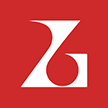Report: The total scale of public funds continued to increase in the first half of the year, with a relatively large growth in bond fund size.
2024-09-19 20:20
In the first half of the year, the total size of public funds continued to increase, with a significant growth in the size of bond funds. The top fund management companies showed a clear trend of concentration.
According to a research report released by the Shanghai Securities Fund Evaluation Research Center, in the first half of the year, the total size of public funds continued to increase, with a significant increase in the size of bond funds and a clear concentration effect of fund companies' management sizes. As of the first half of 2024, the total size of public funds was 30.71 trillion yuan, an increase of 3.47 trillion yuan from the second half of 2023 when it was 27.24 trillion yuan. The sizes of money market, stock, mixed, bond, and QDII funds were 13.19 trillion, 2.83 trillion, 3.34 trillion, 10.60 trillion, and 0.44 trillion respectively. Money market, stock, bond, and QDII funds saw an increase in size, with the money market fund experiencing the largest increase in share, growing by 1.91 trillion yuan; the sizes of mixed and FOF funds decreased, with mixed funds seeing the biggest decrease in total size, declining by 0.39 trillion yuan.
In terms of fund companies' management sizes, as of the end of the first half of 2024, there were 22 companies with total sizes above 500 billion, 36 companies with sizes between 1000-500 billion, and 78 companies with sizes between 100-1000 billion. The market is heavily concentrated towards larger companies, with the top 30 companies accounting for 74.73% of the total market size, indicating a significant concentration effect.
Summary
Overview of the basic market in the first half of 2024:
Market performance review: In the first half of 2024, apart from the Hang Seng Index and the CSI 300, major index remained in a downtrend, with the Shanghai Composite Index falling by 0.25%, the Shenzhen Component Index falling by 7.10%, and the ChiNext Index falling by 10.99%. Overall, the banking, coal, petroleum and petrochemical, home appliance, electricity, and utilities sectors saw significant gains.
Market fund flows: Most sectors saw net active buying being negative, with Northbound funds focusing on the banking sector; the top three sectors for Northbound funds inflow were banking, electronics, and non-ferrous metals.
Public fund sizes: The total size of public funds continued to increase, with a significant increase in the size of bond funds and a clear concentration effect of fund companies' management sizes.
As of the first half of 2024, the total size of public funds was 30.71 trillion yuan, an increase of 3.47 trillion yuan from the second half of 2023 when it was 27.24 trillion yuan. The sizes of money market, stock, mixed, bond, and QDII funds were 13.19 trillion, 2.83 trillion, 3.34 trillion, 10.60 trillion, and 0.44 trillion respectively. Money market, stock, bond, and QDII funds saw an increase in size, with the money market fund experiencing the largest increase in share, growing by 1.91 trillion yuan; the sizes of mixed and FOF funds decreased, with mixed funds seeing the biggest decrease in total size, declining by 0.39 trillion yuan. In terms of fund companies' management sizes, as of the end of the first half of 2024, there were 22 companies with total sizes above 500 billion, 36 companies with sizes between 1000-500 billion, and 78 companies with sizes between 100-1000 billion. The market is heavily concentrated towards larger companies, with the top 30 companies accounting for 74.73% of the total market size, indicating a significant concentration effect.
Active equity funds:
Performance review: The average return on various types of active equity funds in the first half of 2024 was negative, with the average returns of ordinary stock funds, partial equity mixed funds, and flexible allocation mixed funds all showing some retracement, falling by 5.98%, 5.32%, and 2.23% respectively. The retracement was smaller compared to the second half of 2023.
Position changes: In the first half of 2024, the positions of ordinary stock funds, partial equity mixed funds, and flexible allocation mixed funds all slightly decreased compared to the second half of 2023.
Industry distribution: In the first half of 2024, the top three industries held by active equity funds in terms of market value were electronics, food and beverage, and electrical equipment and new energy, accounting for 15.99%, 14.65%, and 12.16% respectively; compared to the second half of 2023, the top three industries that saw increased holdings were computers, food and beverage, and electronics, with increases of 6.26%, 3.96%, and 3.58% respectively. The top three industries that saw reduced holdings were home appliances, communications, and non-ferrous metals, with reductions of 2.76%, 2.00%, and 1.42% respectively.
Passive equity funds:
Overall performance: In the first half of 2024, the average return on index funds was -5.32%, showing a narrower retracement compared to the second half of 2023.
Main text
1. Basic Market Overview
1.1 Market performance review
In the first half of 2024, apart from the Hang Seng Index and the CSI 300, major index continued to be in a downtrend, with the Shanghai Composite Index falling by 0.25%, the Shenzhen Component Index falling by 7.10%, and the ChiNext Index falling by 10.99%.
In the first half of 2024, most of the CITIC first-level industry indices experienced retracements; the banking, coal, petroleum and petrochemical, home appliance, electricity, and utilities sectors saw significant gains, rising by 19.22%, 12.80%, 11.36%, 10.79%, and 9.92% respectively, while the comprehensive, consumer services, computer, trade, retail, and media sectors experienced significant retracements, falling by 37.15%, 23.89%, 21.61%, 21.47%, and 21.44% respectively.
1.2 Market fund flows
In the first half of 2024, most sectors saw net active buying being negative, with inflows into the banking and coal sectors, with inflows of 77.321 billion yuan and 6.202 billion yuan respectively; the machinery, computer, and electronics sectors saw the most outflows, with outflows of 310.851 billion yuan, 297.679 billion yuan, and 289.597 billion yuan respectively.
In the first half of 2024, Northbound funds focused on the banking sector. The top three sectors for Northbound fund inflows were banking, electronics, and non-ferrous metals, with inflows of 33.721 billion yuan, 24.178 billion yuan, and 13.852 billion yuan respectively; the top three sectors for Northbound fund outflows were media, pharmaceuticals, and computer sectors, with outflows of 15.4 billion yuan, 9.477 billion yuan, and 7.814 billion yuan respectively.
1.3 Public fund sizes
As of the first half of 2024, the total size of public funds was 30.71 trillion yuan, an increase of 3.47 trillion yuan from the second half of 2023 when it was 27.24 trillion yuan. The sizes of money market, stock, mixed, bond, and QDII funds were 13.19 trillion, 2.83 trillion, 3.34 trillion, 10.60 trillion, and 0.44 trillion respectively. Money market, stock, bond, and QDII funds saw an increase in size, with the money market fund experiencing the largest increase in share, growing by 1.91 trillion yuan; the sizes of mixed and FOF funds decreased, with mixed funds seeing the biggest decrease in total size, declining by 0.39 trillion yuan. In terms of fund companies' management sizes, as of the end of the first half of 2024, there were 22 companies with total sizes above 500 billion, 36 companies with sizes between 1000-500 billion, and 78 companies with sizes between 100-1000 billion. The market is heavily concentrated towards larger companies, with the top 30 companies accounting for 74.73% of the total market size, indicating a significant concentration effect.The sizes of bonds and QDII funds are 13.19 trillion, 2.83 trillion, 3.34 trillion, 10.60 trillion, and 0.44 trillion respectively. The sizes of the money market, stock, bond, and QDII funds have all increased, with the money market fund having the largest increase in share, which grew by 1.91 trillion yuan. The sizes of mixed and FOF funds have decreased, with the mixed fund experiencing the largest decrease in total size, decreasing by 0.39 trillion yuan.Until the end of the first half of 2024, there were 22 fund companies with a total size of over 500 billion, 36 with a size of 1000-500 billion, and 78 with a size of 100-1000 billion. The top companies have a large market share in the total market size, with the top 30 companies accounting for 74.73% of the total market size, showing a significant aggregation effect.
2. Active Equity Funds
2.1 Performance
In the first half of 2024, the average return of various types of active equity funds did not achieve positive results. The average returns of equity funds, equity hybrid funds, and flexible allocation hybrid funds all saw a decline, falling by 5.98%, 5.32%, and 2.23% respectively. The drawdowns were smaller compared to the second half of 2023.
The active equity funds with better and weaker performance in the first half of 2024 are shown in the graph below.
2.2 Portfolio Changes
As of the first half of 2024, the positions of equity funds, equity hybrid funds, and flexible allocation hybrid funds all slightly decreased compared to the second half of 2023.
2.3 Industry Distribution
As of the first half of 2024, the top industry holdings of active equity funds in terms of market value percentage were electronics, food and beverages, and power equipment and new energy, accounting for 15.99%, 14.65%, and 12.16% respectively. Compared to the second half of 2023, the top three industries with increased holdings were computers, food and beverages, and electronics, increasing by 6.26%, 3.96%, and 3.58% respectively. The top three industries with reduced holdings were home appliances, communications, and non-ferrous metals, decreasing by 2.76%, 2.00%, and 1.42% respectively.
3. Passive Equity Funds
The average return of index funds in the first half of 2024 was -5.32%, showing a narrower drawdown compared to the second half of 2023.
The passive equity funds with better and weaker performance in the first half of 2024 are shown in the graph below.
As of the end of August, the total amount of bonds held by overseas institutions in the China Central Depository & Clearing Co., Ltd. reached 3.26 trillion yuan.
Boyu Asset Management: The interest rate-cutting cycle in the United States has begun, but the pace of interest rate cuts is not yet clear.
RECOMMEND

AMAC: In January, 137 new asset-backed special plans were filed, with a total scale of 1122.64 billion yuan.
26/02/2025

Schroder Investment: Investors should consider allocating funds to securitized credit and insurance-linked securities.
26/02/2025

Reuss County Asset Annual Reflection: Policy Tipping Point is very clear. The semiconductor industry in 2025 is a game for the brave.
26/02/2025


